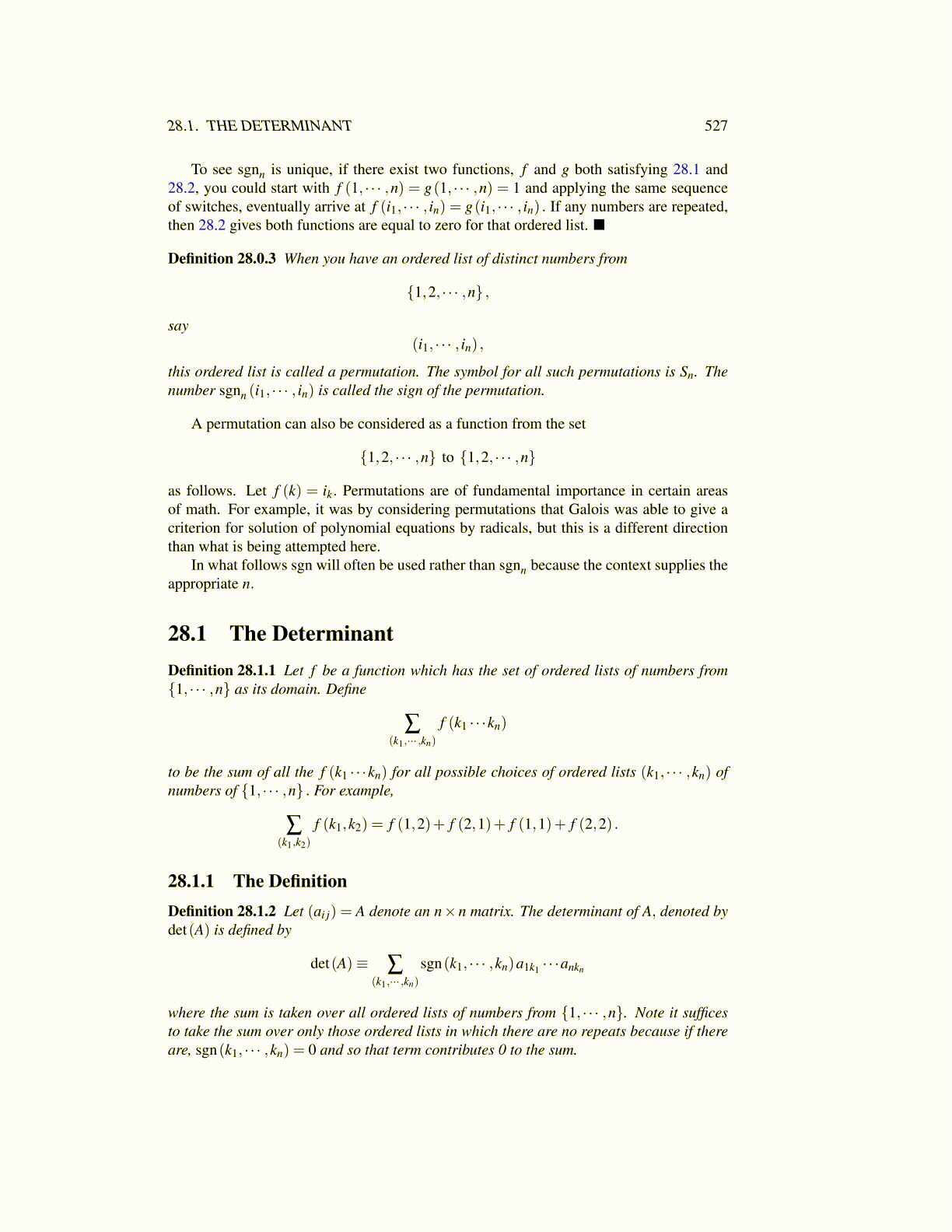
28.1. THE DETERMINANT 527
To see sgnn is unique, if there exist two functions, f and g both satisfying 28.1 and28.2, you could start with f (1, · · · ,n) = g(1, · · · ,n) = 1 and applying the same sequenceof switches, eventually arrive at f (i1, · · · , in) = g(i1, · · · , in) . If any numbers are repeated,then 28.2 gives both functions are equal to zero for that ordered list. ■
Definition 28.0.3 When you have an ordered list of distinct numbers from
{1,2, · · · ,n} ,
say(i1, · · · , in) ,
this ordered list is called a permutation. The symbol for all such permutations is Sn. Thenumber sgnn (i1, · · · , in) is called the sign of the permutation.
A permutation can also be considered as a function from the set
{1,2, · · · ,n} to {1,2, · · · ,n}
as follows. Let f (k) = ik. Permutations are of fundamental importance in certain areasof math. For example, it was by considering permutations that Galois was able to give acriterion for solution of polynomial equations by radicals, but this is a different directionthan what is being attempted here.
In what follows sgn will often be used rather than sgnn because the context supplies theappropriate n.
28.1 The DeterminantDefinition 28.1.1 Let f be a function which has the set of ordered lists of numbers from{1, · · · ,n} as its domain. Define
∑(k1,··· ,kn)
f (k1 · · ·kn)
to be the sum of all the f (k1 · · ·kn) for all possible choices of ordered lists (k1, · · · ,kn) ofnumbers of {1, · · · ,n} . For example,
∑(k1,k2)
f (k1,k2) = f (1,2)+ f (2,1)+ f (1,1)+ f (2,2) .
28.1.1 The DefinitionDefinition 28.1.2 Let (ai j) = A denote an n×n matrix. The determinant of A, denoted bydet(A) is defined by
det(A)≡ ∑(k1,··· ,kn)
sgn(k1, · · · ,kn)a1k1 · · ·ankn
where the sum is taken over all ordered lists of numbers from {1, · · · ,n}. Note it sufficesto take the sum over only those ordered lists in which there are no repeats because if thereare, sgn(k1, · · · ,kn) = 0 and so that term contributes 0 to the sum.